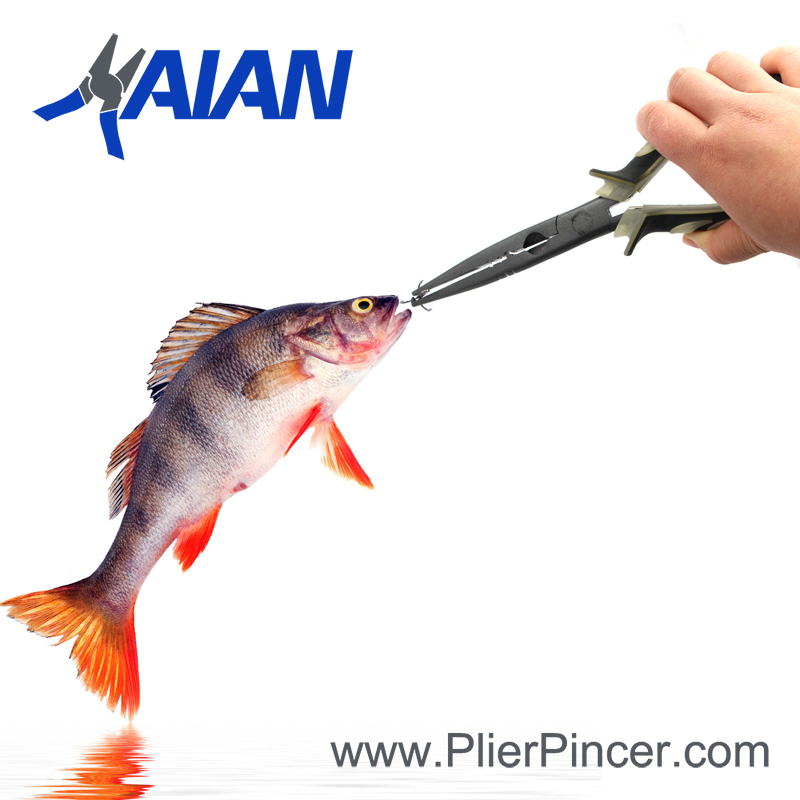Fishing pliers is a must have tool for fisherman.
It’s easy to underestimate the importance of fishing accessories when assembling your angling kit. Your focus is justifiably on finding the best fishing rod and reel for the fish you’d like to catch.
However, adding a pair of fishing pliers to your tackle box can make inshore angling much less laborious.

As an avid saltwater angler, I wasted more money than I’d like to admit on fishing pliers that couldn’t withstand the wear and tear for over a few months.
Frequent exposure to saltwater, cutting thick fishing lines, or removing hooks can wear out a pair of fishing pliers quickly, leaving you without an essential tool for offshore and inshore angling.
That’s why I’ve tested dozens of fishing pliers and handpicked those you won’t have to replace often, regardless of how harsh the conditions in which you use them.
Bottom Line Up Front
Most anglers use saltwater fishing pliers to remove the hook and the bait from the fish, but this isn’t the only task you can perform with them. Hence, all models in this article are durable and versatile.
The key factors to consider when choosing fishing pliers
The first pair of fishing pliers I got didn’t have an anti-corrosion coating, but I thought I’d still be able to use them for a year or two. Moreover, I didn’t do a great job cleaning and lubricating them, so I had to replace them only a few months after buying them.
The most important feature you must pay attention to when shopping for fishing pliers is the material they’re made of. In my experience, aluminum, titanium, and stainless steel models are the most durable.
Moreover, fishing pliers should have an anti-corrosion coating because it slows down rusting. The anti-slip grip is another vital feature a reliable pair of fishing pliers must have, as handling pliers that don’t have this feature with wet hands can be tricky.
Let’s explore additional features to help you pick a good pair of fishing pliers.
- Cutting power: Don’t forget to check if the pliers are sharp enough to cut through the braided line.
- Nose length: The model you choose should have a long nose that allows you to reach the hook and the bait quickly.
- Additional accessories: Getting a model with a sheath will enable you to keep your fishing pliers handy and unhook a fish quickly.
The advantages of owning a pair of fishing pliers
Some saltwater fish have sharp teeth, so removing a hook with your hands after you reel in a walleye or tuna isn’t only impractical and potentially dangerous.
The nose of fishing pliers is long enough to reach the hook and remove it from the fish’s mouth without putting your fingers at risk.
This tool is also useful when dealing with frayed or tangled fishing lines, as it can easily cut through monofilament, fluorocarbon, or braided fishing lines.
In addition, some models have a split-ring tool that helps you switch to a barbless hook or replace a hook on a bait. As a result, owning a pair of fishing pliers is a must for recreational and professional sea anglers.
Selection criteria
I understand how frustrating it can be to replace your fishing pliers every few months because their teeth get dull or their handle grips get damaged from prolonged UV and saltwater exposure.
That’s why I prioritized the model’s durability during the selection process to pinpoint the fishing cutters made of materials that allow them to stay in perfect condition for a long time.
I also considered the length of the model’s nose to find the models that will enable you to remove a hook even when a fish swallows the bait and hooks go deep into its mouth.
Here’s a quick overview of other factors that influenced my decision-making during the selection process.
- Anti-corrosion properties: I only listed models made of non-corrosion-prone materials with an anti-corrosion coating.
- Cutting capacity: All the fishing pliers I included in this article can cut through thick and thin fishing lines.
- Additional accessories: Buying sheaths and lanyards separately will increase costs, so most models in this article come with these accessories.